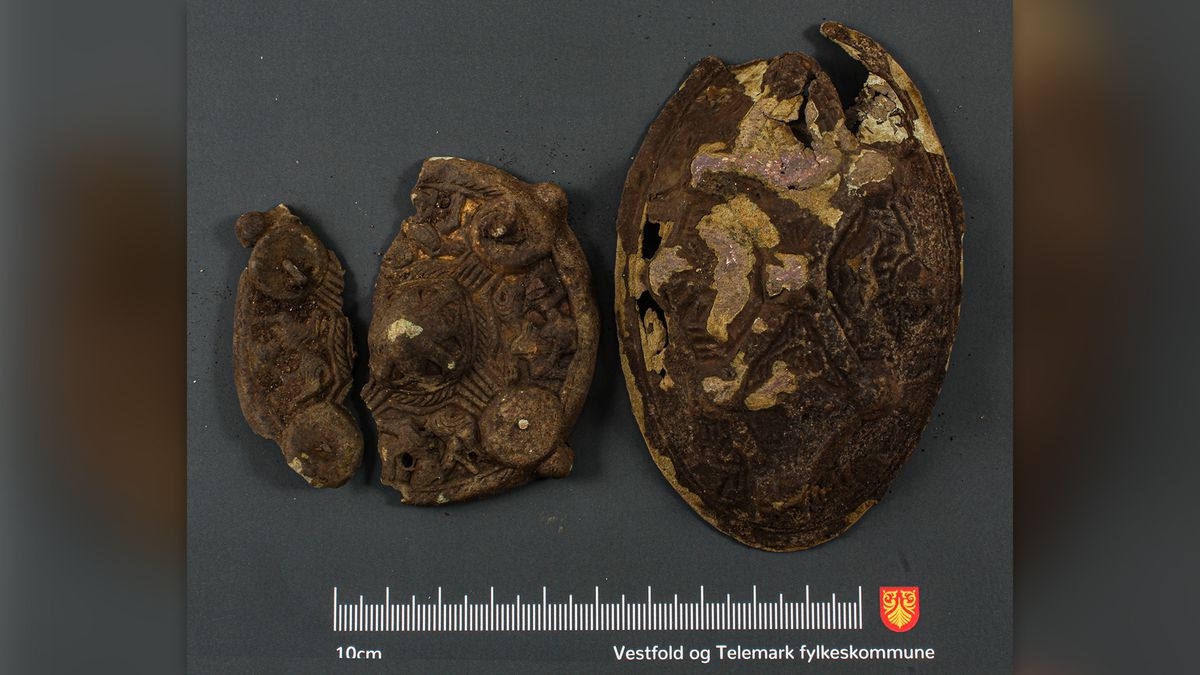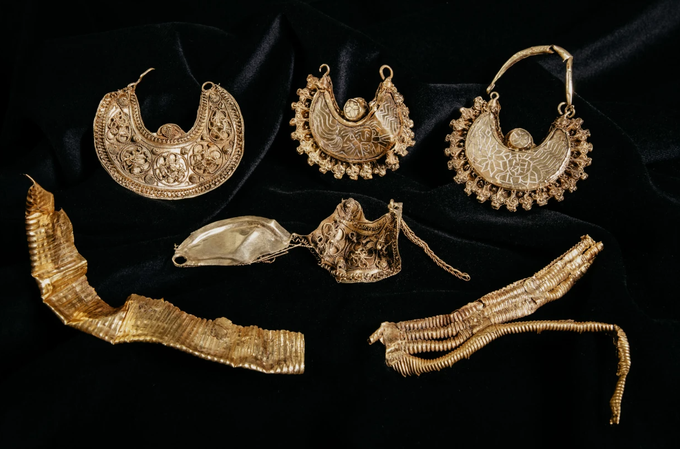On the island of Jomfruland, Norway, the Aasvik family accidentally discovered buried Viking relics while using a metal detector to find a lost earring. They received a signal at a large tree. After digging down, the family discovered Viking grave relics including two brooches about 1,200 years old, made from bronze and once plated with gold, that may have belonged to a noble woman.
Vibeke Lia, archaeologist for Vestfold and Telemark County Council, said the artifacts could belong to the early Viking Age (AD 793 to 1066).

Photo: Rune Nordseter/Kulturarv
The larger artifact found in the tomb was an oval brooch that may have been used to tie shoulder straps to the front of a woman’s dress. Such brooches are often found in the graves of Viking women and are typical of the ninth century style. The remaining object identified by archaeologists is also a circular brooch. Both brooches are decorated with intricate carvings of animals and geometric patterns. Lia said they were all made from copper and had gold stains on them, indicating they had been plated with gold.

Lia comments on the archaeologists’ next direction: “The next step is to assess whether this site is at risk of deterioration or not. If this location is safe, perhaps these items will not be dug up but will be preserved right there.”






